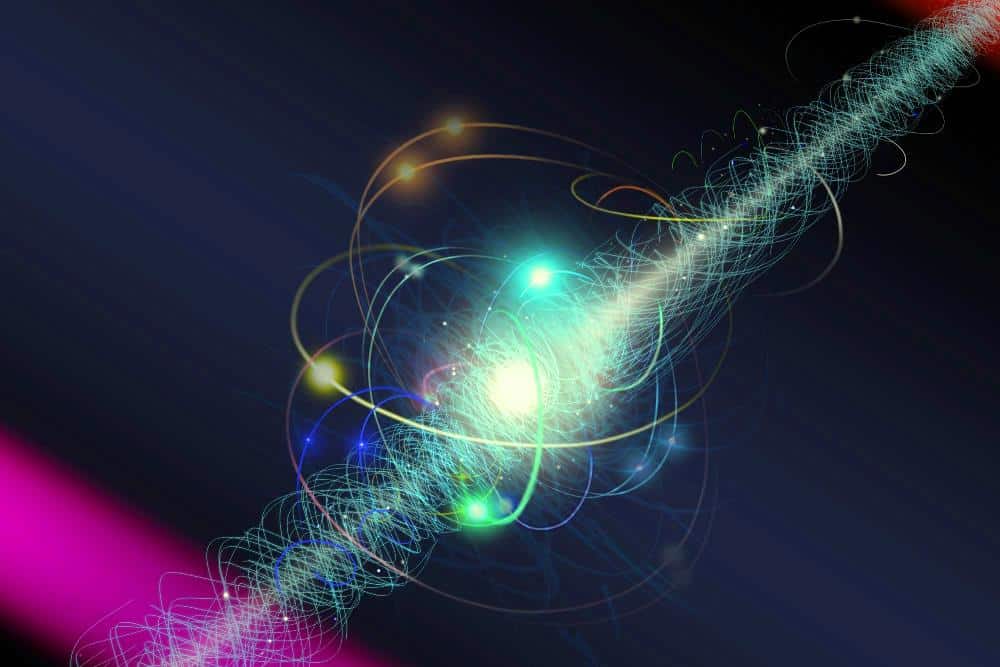All about an atom,
Atoms are the basic units of matter and the defining structure of elements. Atoms are made up of three particles: protons, neutrons and electrons.
Protons and neutrons are heavier than electrons and reside in the center of the atom, which is called the nucleus. Electrons are extremely lightweight and exist in a cloud orbiting the nucleus. The electron cloud has a radius 10,000 times greater than the nucleus.
Protons and neutrons have approximately the same mass. However, one proton weighs more than 1,800 electrons. Atoms always have an equal number of protons and electrons, and the number of protons and neutrons is usually the same as well. Adding a proton to an atom makes a new element, while adding a neutron makes an isotope, or heavier version, of that atom.
Nucleus
The nucleus was discovered in 1911, but its parts were not identified until 1932. Virtually all the mass of the atom resides in the nucleus. The nucleus is held together by the “strong force,” one of the four basic forces in nature. This force between the protons and neutrons overcomes the repulsive electrical force that would, according to the rules of electricity, push the protons apart otherwise.
Protons
Protons are positively charged particles found within atomic nuclei. They were discovered by Ernest Rutherford in experiments conducted between 1911 and 1919.
The number of protons in an atom defines what element it is. For example, carbon atoms have six protons, hydrogen atoms have one and oxygen atoms have eight. The number of protons in an atom is referred to as the atomic number of that element. The number of protons in an atom also determines the chemical behavior of the element. The Periodic Table of the Elements arranges elements in order of increasing atomic number.
Protons are made of other particles called quarks. There are three quarks in each proton – two “up” quarks and one “down” quark – and they are held together by other particles called gluons.
Electrons
Electrons have a negative charge and are electrically attracted to the positively charged protons. Electrons surround the atomic nucleus in pathways called orbitals. The inner orbitals surrounding the atom are spherical but the outer orbitals are much more complicated.
An atom’s electron configuration is the orbital description of the locations of the electrons in an unexcited atom. Using the electron configuration and principles of physics, chemists can predict an atom’s properties, such as stability, boiling point and conductivity.
Typically, only the outermost electron shells matter in chemistry. The inner electron shell notation is often truncated by replacing the long-hand orbital description with the symbol for a noble gas in brackets. This method of notation vastly simplifies the description for large molecules.
For example, the electron configuration for beryllium (Be) is 1s22s2, but it’s is written [He]2s2. [He] is equivalent to all the electron orbitals in a helium atom. The Letters, s, p, d, and f designate the shape of the orbitals and the superscript gives the number of electrons in that orbital.
Neutrons
Neutrons are uncharged particles found within atomic nuclei. A neutron’s mass is slightly larger than that of a proton. Like protons, neutrons are also made of quarks – one “up” quark and two “down” quarks. Neutrons were discovered by James Chadwick in 1932.
Very nearly all of it. Let’s take a look at an atom of hydrogen to see how empty it really is.
A hydrogen atom is made from a single proton that’s circled by a single electron. How big is a hydrogen atom? The radius of a hydrogen atom is known as the Bohr Radius, which is equal to.529 × 10-10 meters. That means that a hydrogen atom has a volume of about 6.2 × 10-31 cubic meters.
How big is the proton at the center of a hydrogen atom? Recent studies indicate that protons have a radius of about.84 × 10-15 meters, giving them a volume of about 2.5 × 10-45 cubic meters.
We need to do a little more math to find out how much of a hydrogen atom is empty space:.
Percent Full = 100 × (Volume Filled / Total Volume)
Percent Full = 100 × (2.5 × 10**-45 m3 / 6.2 × 10**-31 m3)
Percent Full = 100 × (4 × 10**-15)
Percent Full = 4 × 10**-13 %
Percent Full = 0.0000000000004%
If 0.0000000000004% of a hydrogen atom is full, then the rest of it must be empty:
Percent Empty = 100% – Percent Full
Percent Empty = 100% – 0.0000000000004%
Percent Empty = 99.9999999999996%
A hydrogen atom is about 99.9999999999996% empty space. Put another way, if a hydrogen atom were the size of the earth, the proton at its center would be about 200 meters (600 feet) across. While I wouldn’t want something that big landing on my head, it’s tiny compared to the size of the earth.

